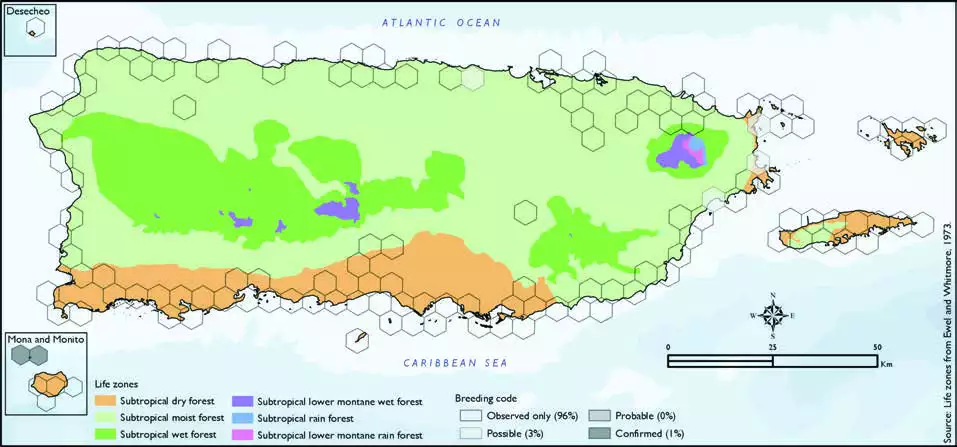Magnificent Frigatebird
Description
The magnificent frigatebird (Fregata magnificens) or man o' war is a seabird of the frigatebird family Fregatidae. With a length of 89–114 centimetres (35–45 in) and wingspan of 2.17–2.44 m (7.1–8.0 ft) it is the largest species of frigatebird. It occurs over tropical and subtropical waters off America, between northern Mexico and Perú on the Pacific coast and between Florida and southern Brazil along the Atlantic coast. There are also populations on the Galápagos Islands in the Pacific and the Cape Verde islands in the Atlantic.
Distribution & Habitat
The Magnificent Frigatebird occurs through the tropical and
subtropical coastal waters of the
Western Hemisphere including
the West Indies, where it is
generally a common resident
throughout the islands (Raffaele and others 1998). In addition,
it occurs on the Cape Verde
Islands off the coast of West
Africa (Biaggi 1997, Oberle 2018,
Raffaele and others 1998). It is
described as common along
most coastal areas of Puerto Rico
(Oberle 2018), and it inhabits/
nests on Monito (Oberle 2018) as
well as other adjacent offshore
cays around Puerto Rico (Biaggi
1997), although it formerly
nested in Desecheo. On Vieques,
it is described as a fairly common
non-breeding resident (Gemmill
2015). It usually occurs over
bays, coastal lakes and lagoons,
inshore waters, mangrove islands, and offshore cays but
can also wander well inland
soaring on thermal currents or
after storms or hurricanes (Biaggi
1997, Oberle 2018, Raffaele and
others 1998). The atlas fieldwork
yielded a total of 138 records
within 138 hexagons or 29
percent of the 479 total hexagons
(see map). Of the 138 hexagons
where this species was found,
breeding met the atlas definition
of confirmed in 1 percent (2) of
the hexagons and possible in 3
percent (4), while the species
was observed in 96 percent (132)
of the hexagons but without
evidence of breeding (see map).Magnificent Frigatebird distribution. The map shows the highest breeding code by hexagon and overlaying the ecological life zones
in Puerto Rico. Note: percentages may not total 100 due to rounding. 135Magnificent Frigatebird/Fragata Magnífica

Breeding Habits
Previously published reports indicate that the Magnificent
Frigatebirds breeding season is
highly variable but appears to
peak in November and February
(Raffaele and others 1998). It
nests colonially, sometimes
among other seabirds, and the
nest usually consists of a crude
structure made of sticks and
twigs, normally built in a tree
or bush but sometimes directly
on the ground (Biaggi 1997,
Oberle 2018, Raffaele and others
1998). Atlas results suggest
that this species breeds mostly from February to April and to a
lesser extent also during August,
October, and December (see
chart). Overall, the breeding
activity appears to peak in April,
and it equally takes place within
the subtropical dry and moist
forest life zones (see chart).
Results show that this species
breeds mostly in coastal areas
within the subtropical dry forest
life zone (67 percent of the
hexagons) (see table and map).
Conservation
The current population trend of the Magnificent Frigatebird is described as increasing
in southern North America
(Butcher and Niven 2007), and
it is currently listed as a species
of Least concern by the IUCN
(BirdLife International 2018).
Locally, this species is not
listed in any of the threatened
categories of PRDNER and
USFWS. In Puerto Rico, the
Magnificent Frigatebird has a
protected habitat in land of 6
percent or 9 km2 of the total area covered by the hexagons where
evidence of breeding was found
for this species (144 km2).
Related Species
Family:
frigatebird